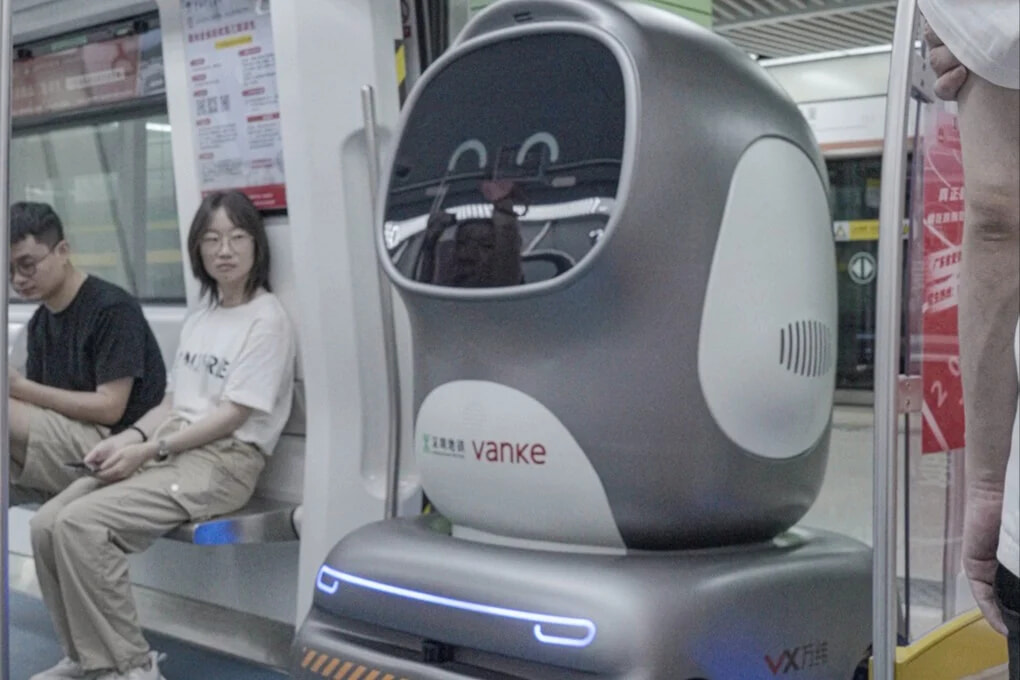
In China, Robots Are Taking the Subway to Make Daily 7-Eleven Deliveries
Whoa.
Published July 21, 2025
Advertisement
Advertisement
1. Robots on the Rails
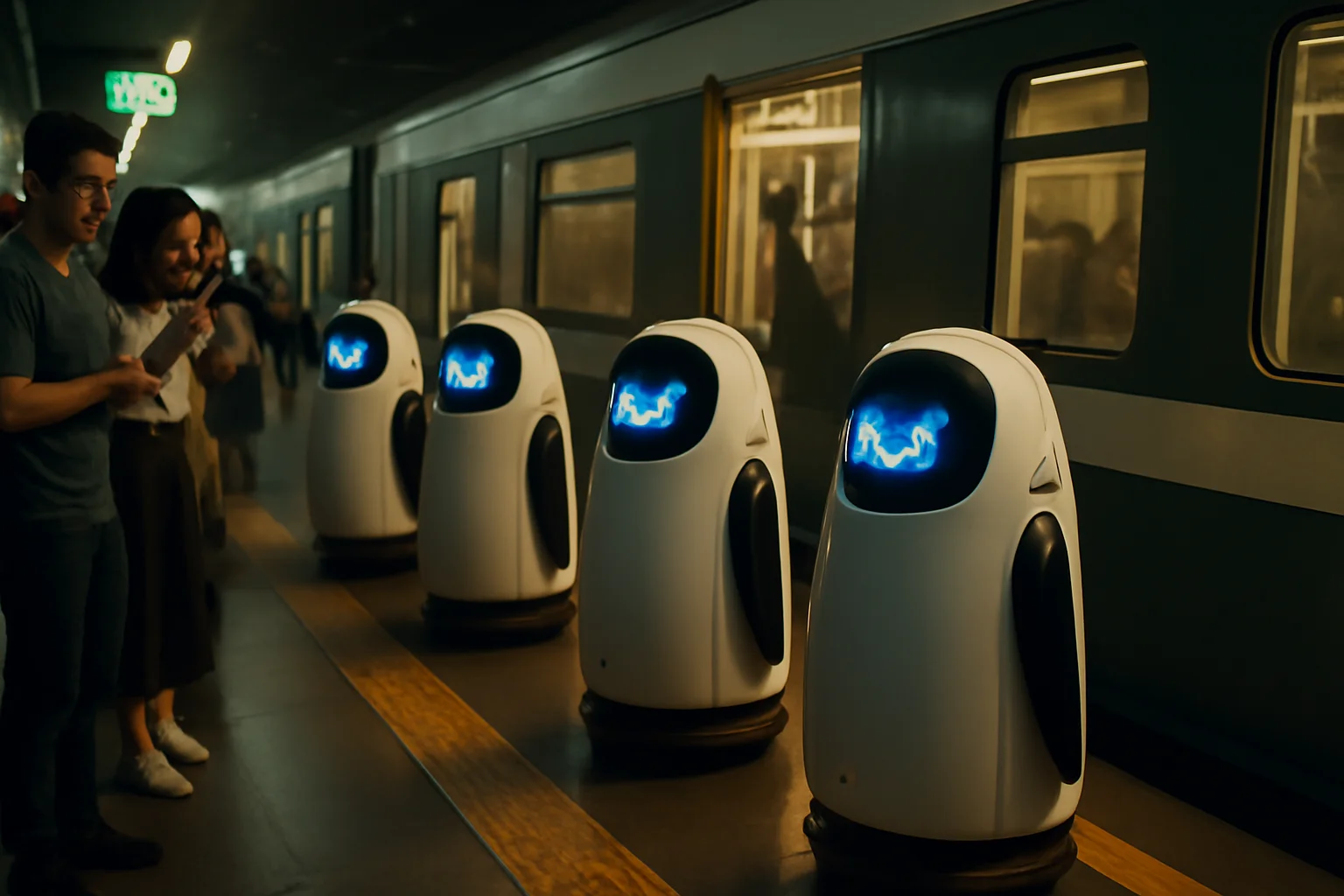
On a humid Monday in Shenzhen, subway commuters paused to watch a new kind of passenger line up neatly at the platform edge—a fleet of penguin-shaped delivery robots, standing a meter tall and brimming with purpose. The city’s logistics giant, VX Logistics, launched these bots on Line 2 as part of an ambitious trial to restock over 100 7-Eleven stores scattered across the sprawling metro system. This was no ordinary tech demo: the robots boarded trains during off-peak hours, flashing animated LED faces as curious riders snapped photos and filmed their debut. For years, managers of subway convenience stores wrestled with the challenge of moving goods through crowded stations, relying on human workers wheeling heavy trolleys from above ground through narrow corridors and bottlenecked entrances. The spectacle of autonomous robots slipping onto subway cars marked a turning point—a hint that public spaces were on the cusp of a logistical revolution. Shenzhen, already renowned as a testbed for automation, is using this pilot to address the gnawing inefficiencies of last-mile retail delivery. The robots navigate platform gaps, board elevators, and weave through complex underground mazes with an autonomy that would have seemed unthinkable a decade ago. Behind the scenes, an AI-powered “dispatch brain” orchestrates every move, calculating the best routes based on real-time orders, store layouts, train schedules, and congestion levels. At each stop, the robots glide out of the subway cars, roll up to store entrances, and present their cargo to waiting staff, transforming what was once a laborious process into a seamless, almost invisible operation. As the pilot gathers pace, Shenzhen’s subway may be poised to become more than just a transit artery—it could evolve into the city’s next major supply line. The question on everyone’s mind: how did this futuristic scene become reality, and what does it signal for the future of urban living?
Advertisement
2. From Factory Floors to Public Spaces
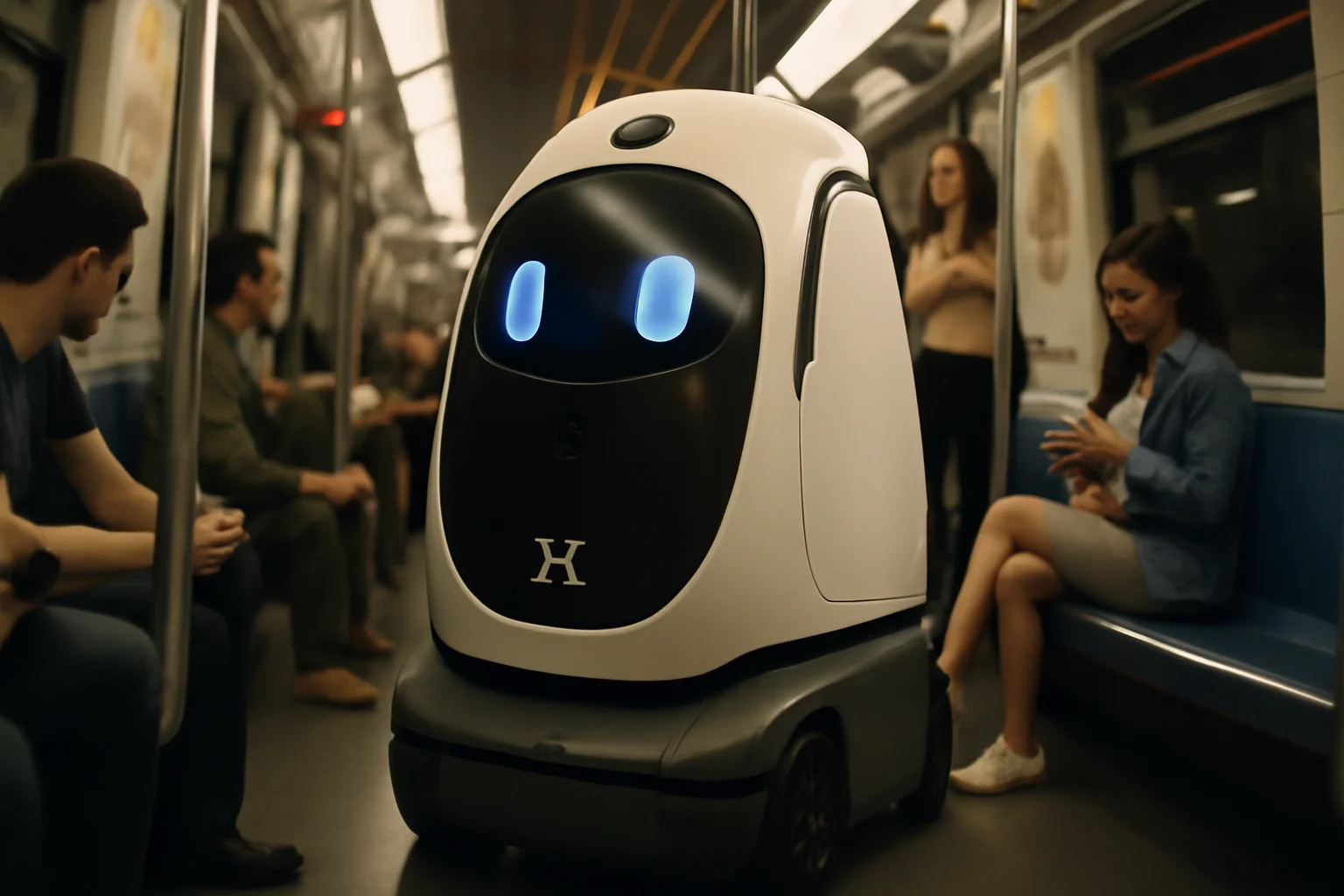
For years, robots were largely confined to the factory floor, humming away in the background of China’s vast manufacturing economy, their presence unseen by most citizens. But as the nation’s population ages and the pace of city life intensifies, the government and private industry have pivoted sharply toward deploying machines in visible, people-facing roles. Shenzhen’s new robot delivery fleet is not a one-off spectacle—it’s part of a sweeping “Embodied Intelligent Robot Action Plan” announced in March, with the explicit goal of expanding robotics into service and industrial sectors by 2027. With over 1,600 robotics companies now operating in the city, officials see the metro delivery project as a critical testing ground for broader urban automation. The challenge has always been moving robots from the controlled environments of factories into the unpredictability of public spaces, where crowds, unpredictable schedules, and physical barriers abound. By building robust chassis that can cross gaps, enter elevators, and withstand the jostle of subway life, VX Logistics has created machines built for the complexities of daily city existence. The robots’ penguin-inspired design isn’t just cute—its rounded form helps avoid snagging or injuring passengers and equipment as it moves through tight quarters. Their debut was carefully planned for off-peak hours, minimizing interference with the human rush while allowing engineers to refine the robots’ routines in real-world conditions. As the bots adapt to more chaotic settings, future upgrades are expected to further bolster their resilience and efficiency, ensuring they can handle crowds and shifting schedules with equal ease. The city’s push to integrate robots into public life mirrors national policy priorities, including efforts to address the growing needs of elder care and specialized labor shortages. All these forces have converged underground, beneath the feet of millions, where a silent transformation of urban logistics is unfolding one robot ride at a time.
Advertisement
3. The Middle-Mile Dilemma
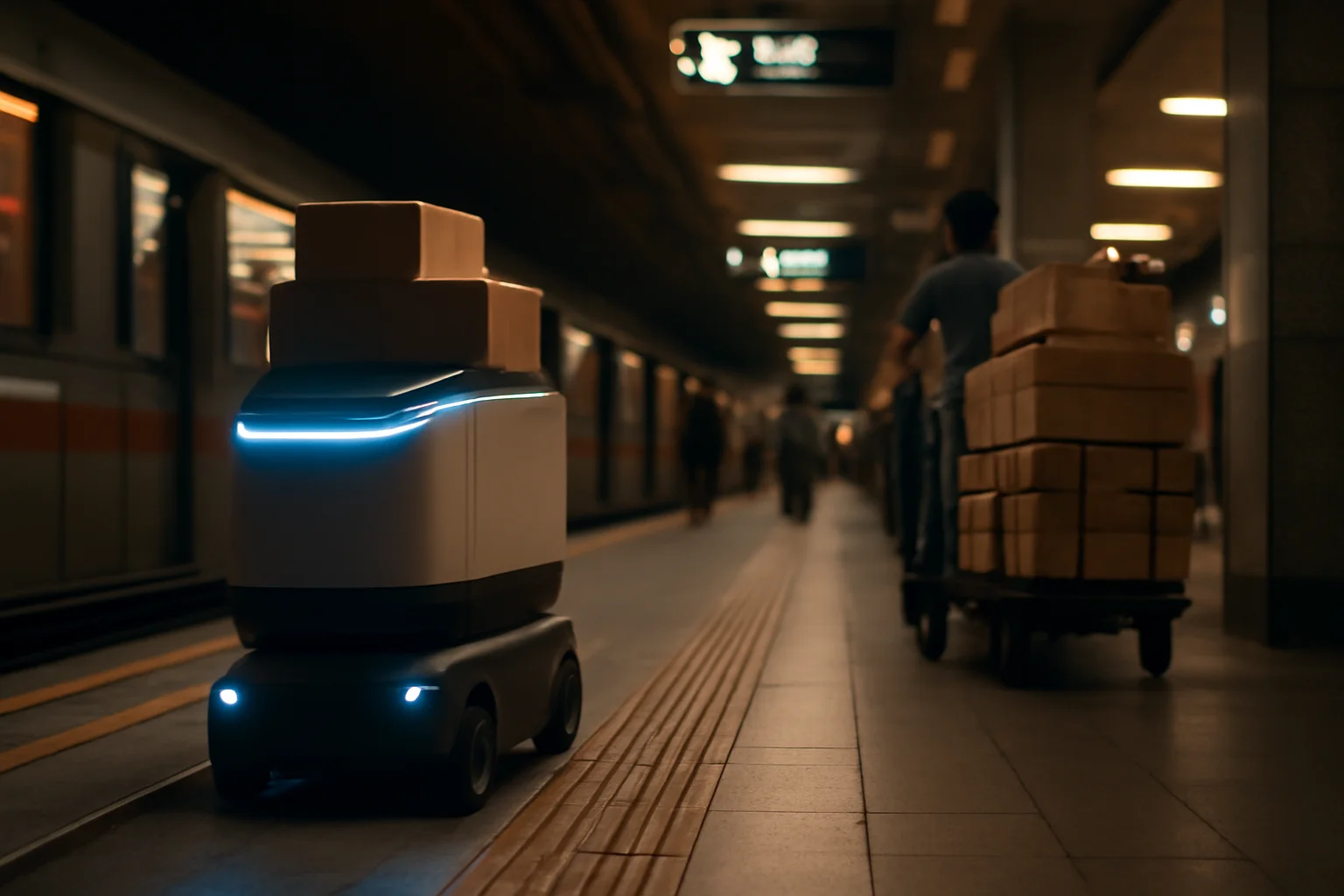
Beneath the fanfare of flashing LEDs and viral social media videos lies a persistent logistical headache: how do you efficiently move goods from above-ground depots into the heart of busy metro systems? Traditionally, delivery workers were forced to double-park, unload supplies, and push heavily laden carts down into subway stations, fighting bottlenecks and delays at every turn. This last leg—neither strictly “first mile” nor “last mile”—has been an Achilles’ heel for retailers operating in subterranean transit hubs. During peak times, crowded corridors slowed deliveries to a crawl, while limited parking led to traffic snarls and frustrated customers waiting for restocked shelves. With over 300 subway stations dotting the Shenzhen map, each featuring its own cluster of convenience stores and kiosks, the inefficiency multiplied rapidly. Store managers often found themselves stuck in a delicate balancing act, trying to replenish inventory without disrupting the flow of commuters or drawing the ire of metro officials. Robotic delivery offered a potential answer, but until now, no system had managed to conquer the complexity of public transit networks. Enter the “Rail Transit + Robot Delivery” pilot: by harnessing underused train capacity during off-peak hours, the robots turn what was a logistical nightmare into a synchronized ballet of automation. The dispatching AI system juggles cargo type, delivery urgency, subway congestion, and even station architecture to plot out the most efficient journey for each robot. Instead of laborers battling crowds, machines glide effortlessly from depot to destination, sidestepping traffic and maximizing efficiency with every run. The result is a dramatic leap in productivity—and a tantalizing glimpse at how tomorrow’s cities might tackle the invisible challenges of their underground worlds.
Advertisement
4. Inside the Mind of a Penguin Bot
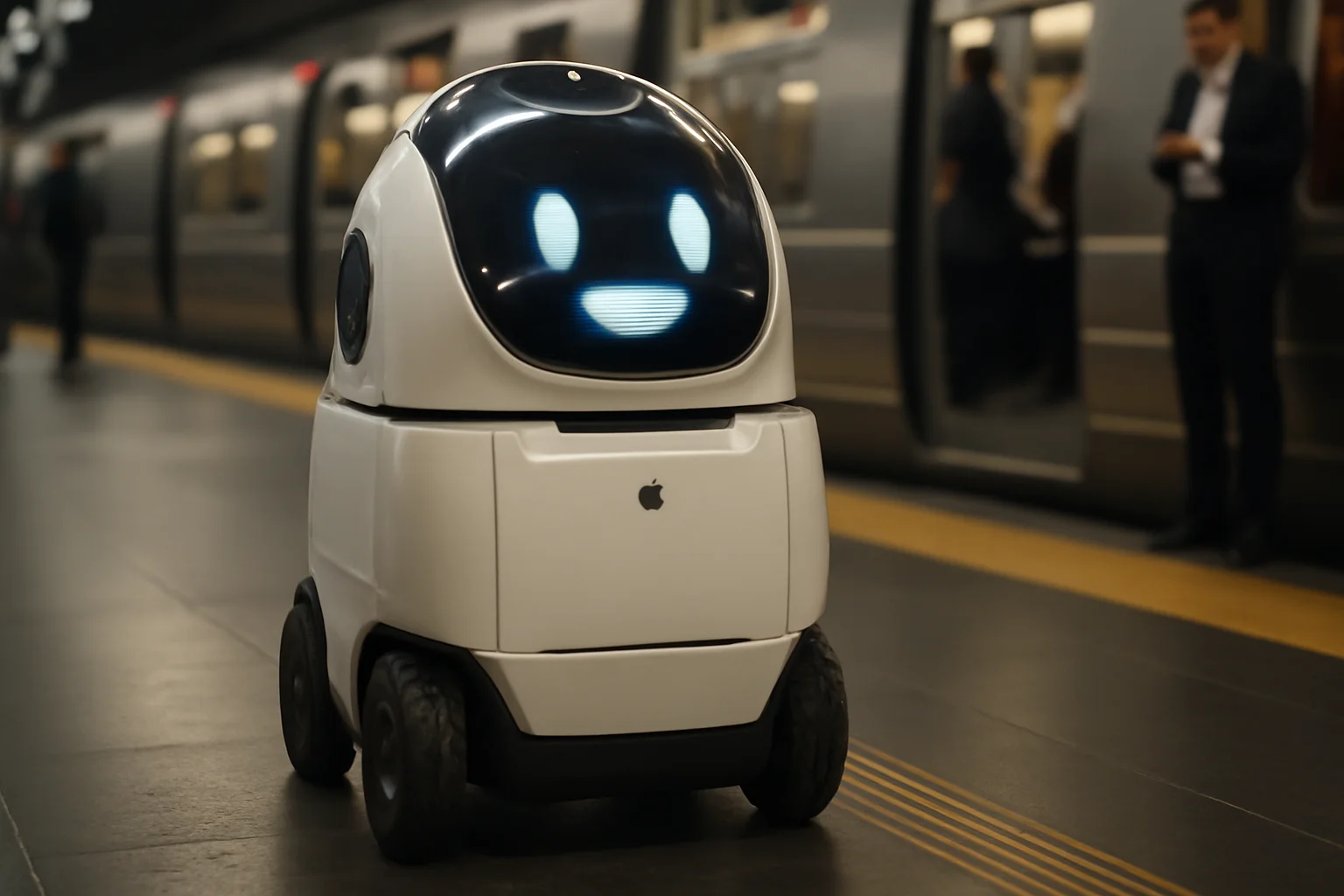
Each delivery robot in the Shenzhen fleet is more than just a box on wheels—it’s a tightly integrated marvel of modern engineering and artificial intelligence. Standing roughly waist-high, the bots are equipped with panoramic LiDAR sensors that grant them a 360-degree view of their surroundings, allowing them to perceive and navigate obstacles with uncanny precision. Their AI “brains” constantly calculate routes based on live variables, responding instantly to new orders, delays, or changes in train schedules. Unlike most sidewalk robots, which can be thwarted by a simple curb or inattentive pedestrian, these machines are purpose-built to cross subway gaps, board elevators, and negotiate crowded platforms. A robust four-wheel chassis acts as a “skeleton and motor nerves,” enabling fine-grained control over every maneuver, whether squeezing through tight doors or pivoting around corners. Each robot’s glossy dome displays animated expressions—friendly eyes and digital smiles—making them approachable mascots even as they carry out serious logistical work. For safety, their rounded shapes and careful pathfinding help prevent accidents, while their LED faces serve as a subtle way to signal intentions to human commuters. Upon reaching a store, the robot’s body unlocks for human staff to retrieve the contents—often cartons of tea, snacks, or drinks ordered through the 7NOW delivery app. Throughout their journey, the robots are in constant communication with the VX Logistics central command, reporting status updates and receiving instructions for real-time adjustments. They’re also designed to learn from every trip, collecting data that engineers use to further refine both software and hardware for future deployments. In essence, each robot is a living experiment—an evolving union of mechanics, code, and city rhythms—mapping the uncharted territory between human life and automated assistance.
Advertisement
5. Automation Goes Public
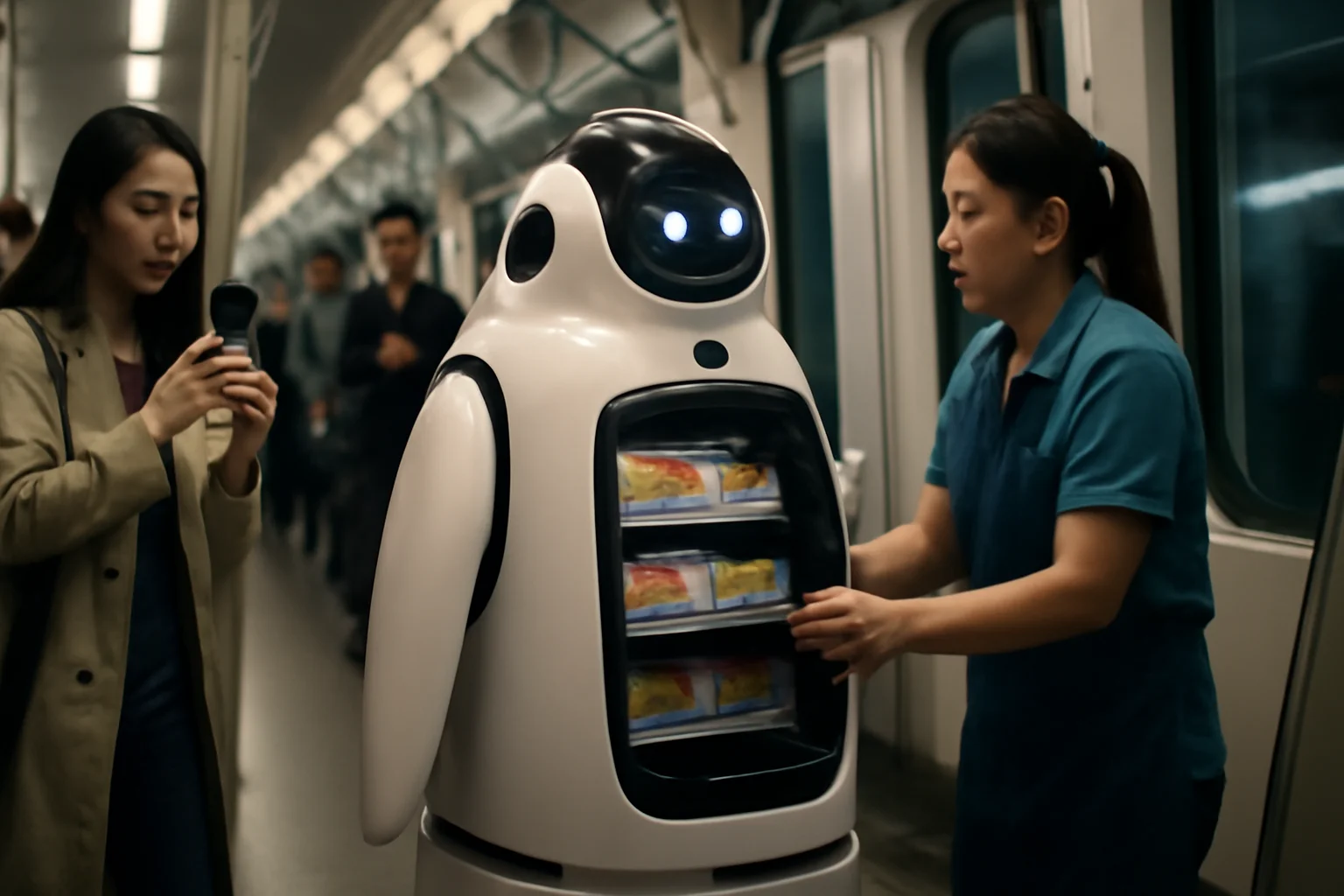
Until recently, the notion of robots working side-by-side with humans in public spaces remained mostly the stuff of science fiction and glossy concept videos. Shenzhen’s trial, however, has rapidly turned those fantasies into practical, observable reality, sparking curiosity and debate both within China and far beyond. Passengers encountering the penguin-like bots on their morning commute find themselves face-to-face with the future, often pausing to snap photos or record videos for social media. What makes this rollout different from previous robot deployments is its seamless integration into a critical, everyday urban function—keeping city dwellers supplied with snacks and essentials. The robots’ smooth choreography aboard trains, ability to dodge crowds, and interactions with store staff all suggest that automation has matured to a point where it can quietly blend into daily routines. For those behind the scenes, the project is about much more than publicity: it’s a proving ground for policies and engineering that could reshape urban logistics worldwide. The pilot has also fueled public conversations about the place of robots in city life, privacy, labor, and the speed at which these technologies might become commonplace. Unlike failed attempts in other countries—where patrol bots were decommissioned after backlash or delivery robots struggled with curbs and weather—Shenzhen’s project has sidestepped many pitfalls by designing for the unique needs of its subway system. Still, the journey is just beginning, and both supporters and skeptics are watching closely to see whether the pilot can scale up or if new obstacles will emerge as the bots leave their initial test routes. With each successful delivery, the boundary between public infrastructure and private automation grows a little blurrier, reshaping the rhythm of city life in subtle, irreversible ways. As the subway bots continue their rounds, a once-murky vision of the automated metropolis is slowly, inexorably, coming into focus.
Advertisement
6. How Shenzhen Sets the Stage
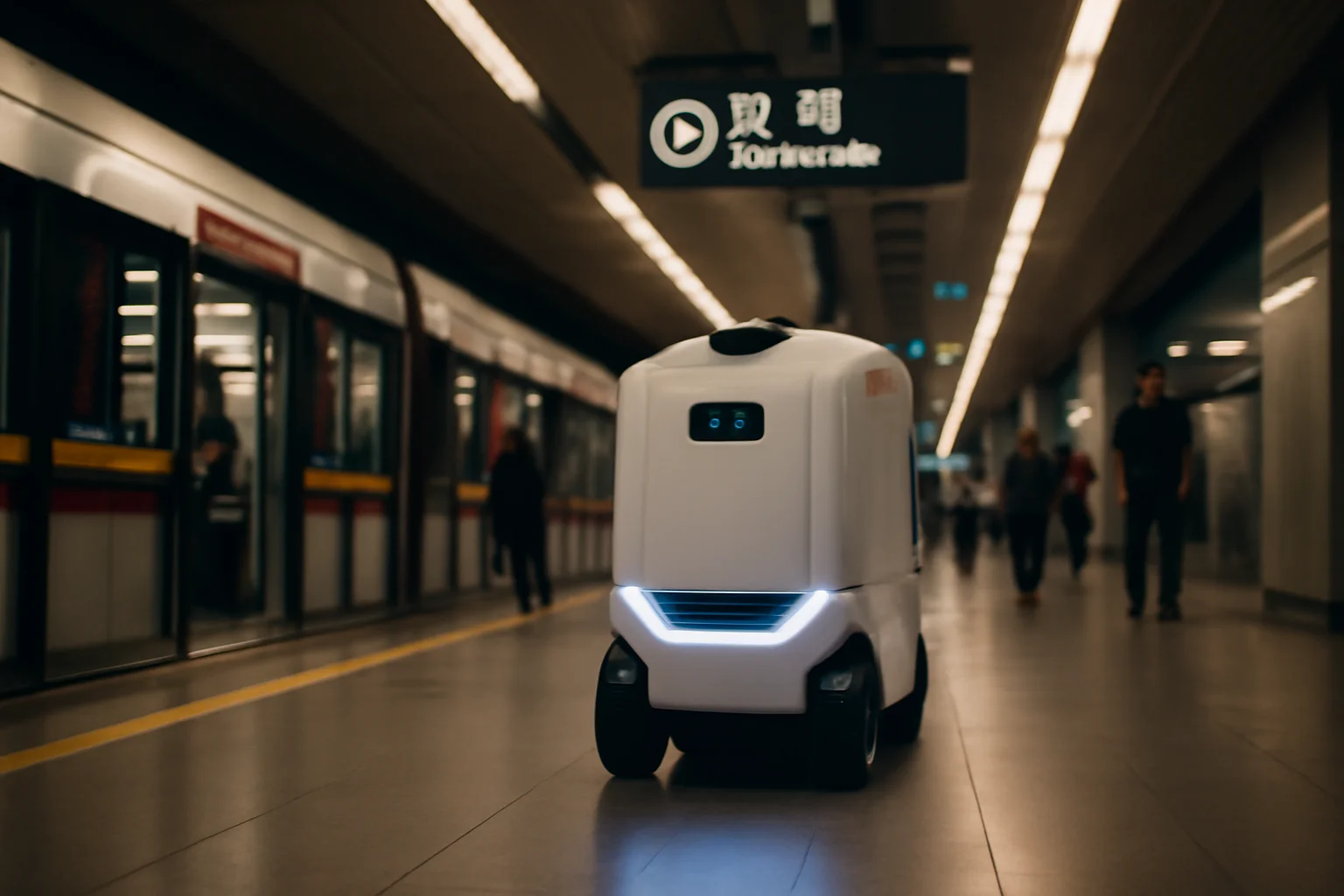
News of Shenzhen’s subway robot fleet has reverberated well beyond the city, drawing the attention of engineers, policymakers, and industry leaders across the globe. The world’s first large-scale public transit robot delivery system is being watched as a potential model for other dense urban centers, many of which face similar logistical bottlenecks. In Japan, 7-Eleven has already begun testing sidewalk delivery robots to cope with driver shortages and an aging population, though those bots lack the unique subway capabilities of their Shenzhen counterparts. Major American cities have experimented with food delivery robots and security bots, but adoption has often stalled amid public backlash or technical challenges. The successful operation of the Shenzhen bots, on the other hand, signals that careful design, local adaptation, and policy support can make robot integration into city life feasible. Chinese officials are actively promoting such projects as part of a broader push to normalize robots in public, not just in transit but in elder care, healthcare, and hazardous industries. By combining AI-powered logistics with existing urban infrastructure, the Shenzhen pilot demonstrates how cities can leapfrog legacy bottlenecks and improve service quality for millions. Other regions—from Singapore to Seoul and New York—are now evaluating whether their own subways, bus networks, or public spaces could support similar innovations. Industry analysts see Shenzhen’s approach as a blueprint for future urban logistics, a scalable solution to a problem that has bedeviled cities for decades. If other cities follow suit, a global wave of subway-borne robots could fundamentally reshape how goods move beneath our feet, just as the automobile once did above ground. For now, the world is watching, eager to see if Shenzhen’s bold experiment will spark the next chapter in the story of urban automation.
Advertisement
7. Engineering the Future
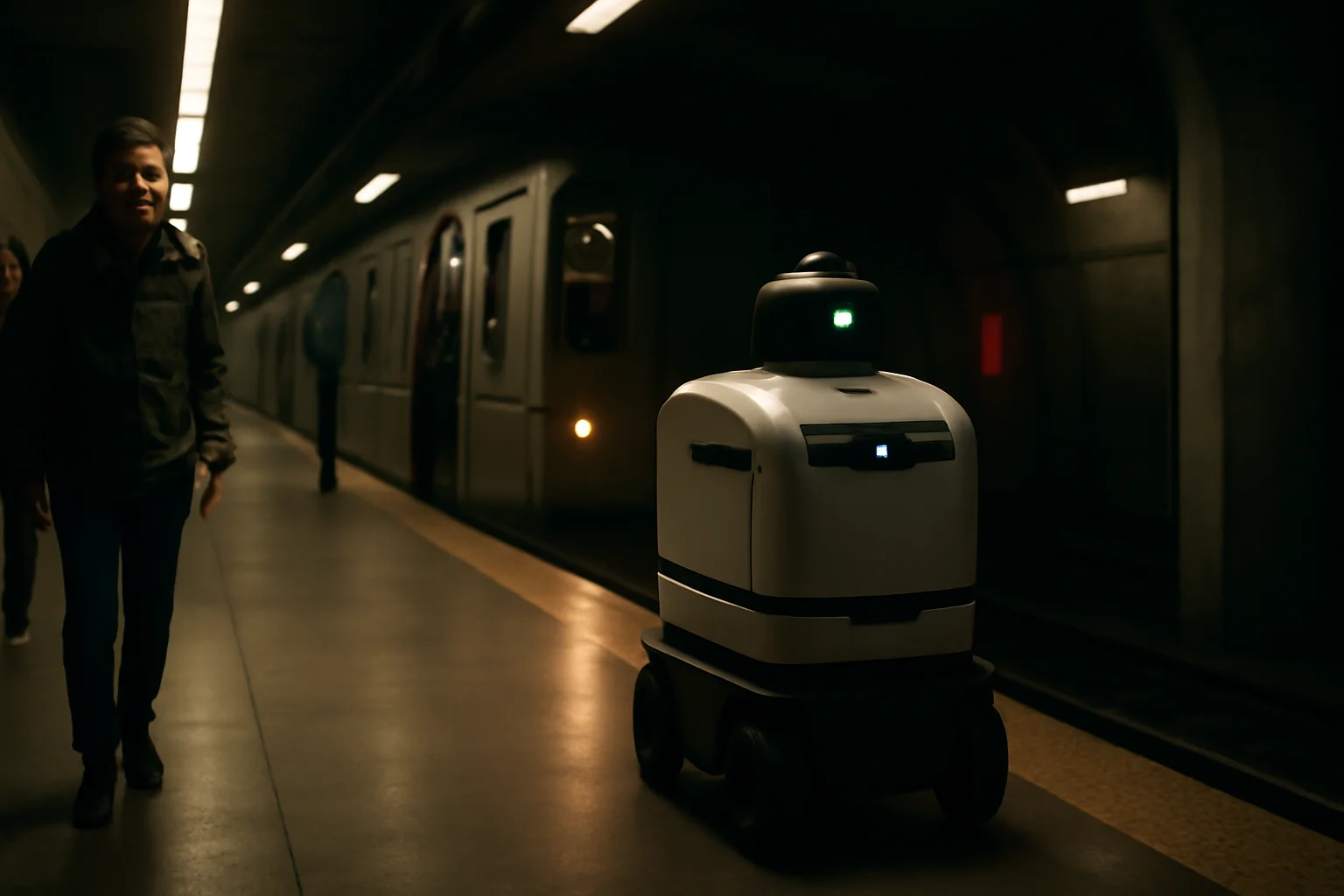
Behind the scenes of the subway delivery project lies a story of relentless engineering, real-world problem-solving, and a willingness to iterate in the face of failure. VX Logistics and its team of roboticists had to overcome a labyrinth of technical challenges, from building robust navigation algorithms to ensuring the robots could safely board and exit crowded trains. Creating a chassis that could manage subway platform gaps, fit into elevators, and handle sudden stops required innovative hardware design and extensive field testing. Software development proved equally demanding, with the dispatch AI forced to account for live train schedules, delivery windows, platform layouts, and the ever-changing flow of passengers. Unexpected hurdles—such as malfunctioning doors, confused commuters, or shifting cargo weights—prompted quick redesigns and new safety protocols. The engineers also had to develop intuitive user interfaces so that store staff could interact with the robots efficiently, reducing confusion and bottlenecks at the point of delivery. To ensure public acceptance, designers opted for the penguin-inspired look, blending approachability with high-tech capability, and equipped the bots with animated faces to signal friendliness and intent. Continuous data collection during each trip allowed the team to rapidly adapt, tweaking software parameters and physical components to smooth out glitches. While the initial deployment focused on snack and beverage deliveries, future updates may add new features like multi-stop routes, parcel delivery, or even medical supply runs. The Shenzhen trial, then, is not just about what robots can do today—it’s about laying the groundwork for a smarter, more responsive, and increasingly automated city tomorrow. Every round-trip on the rails is a lesson learned, a problem solved, and a step closer to a world where machines and humans move through public space as partners, not strangers.
Advertisement
8. Reactions and Resistance
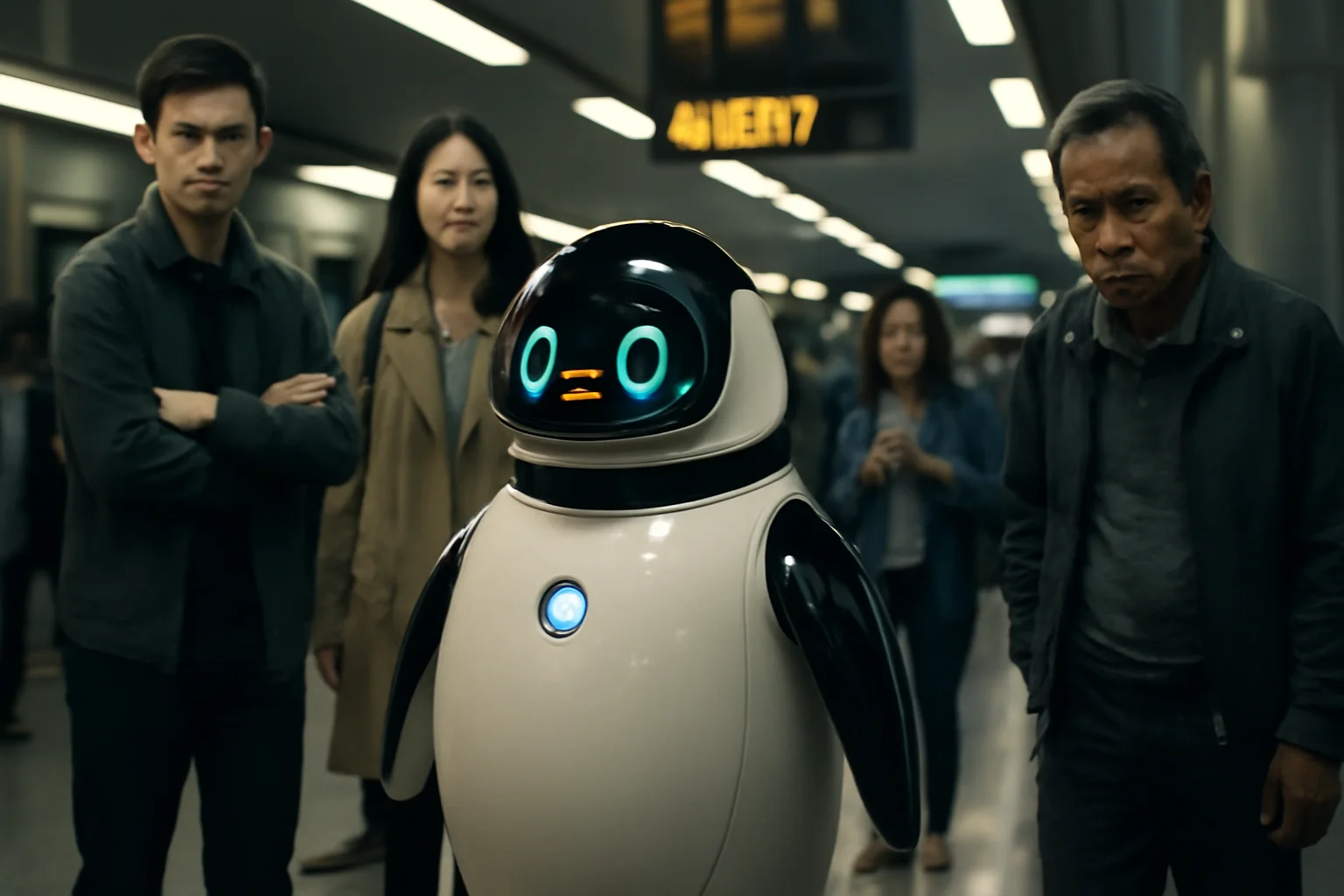
The arrival of penguin-shaped robots on Shenzhen’s subways has captured imaginations but also stirred a range of public reactions, from fascination and amusement to skepticism and concern. For many, the sight of robots quietly navigating human spaces is both a novelty and a harbinger of changes yet to come—a sign that once-futuristic ideas are rapidly becoming mundane. Social media quickly filled with videos and photos of the robots, as commuters marveled at their efficient movements and expressive digital faces. However, not everyone greets automation with open arms; some worry about privacy, job loss, or the specter of a city run by algorithms rather than people. Public opinion remains divided, echoing debates in other cities where robots have struggled to gain acceptance due to accidents, software glitches, or concerns about surveillance. VX Logistics and city officials have moved cautiously, introducing the robots during quieter periods and emphasizing their role as helpers rather than replacements. Feedback from store staff and subway riders is being collected and fed into future project phases, helping refine both technology and deployment strategies. In the broader context, the Shenzhen robots serve as a bellwether for how societies will navigate the delicate balance between innovation and disruption. Public trust—once lost—can be hard to regain, making transparency, safety, and responsiveness to feedback critical as automation moves into new domains. Ultimately, the question of whether robots will become beloved members of city life or unwelcome intruders remains an open one, to be answered not by engineers alone but by every person who shares a train, a platform, or a sidewalk with a machine. For now, the robots continue their rounds, quietly rewriting the rules of engagement between people, technology, and the pulse of the city.
Advertisement
9. Visions of the Automated City
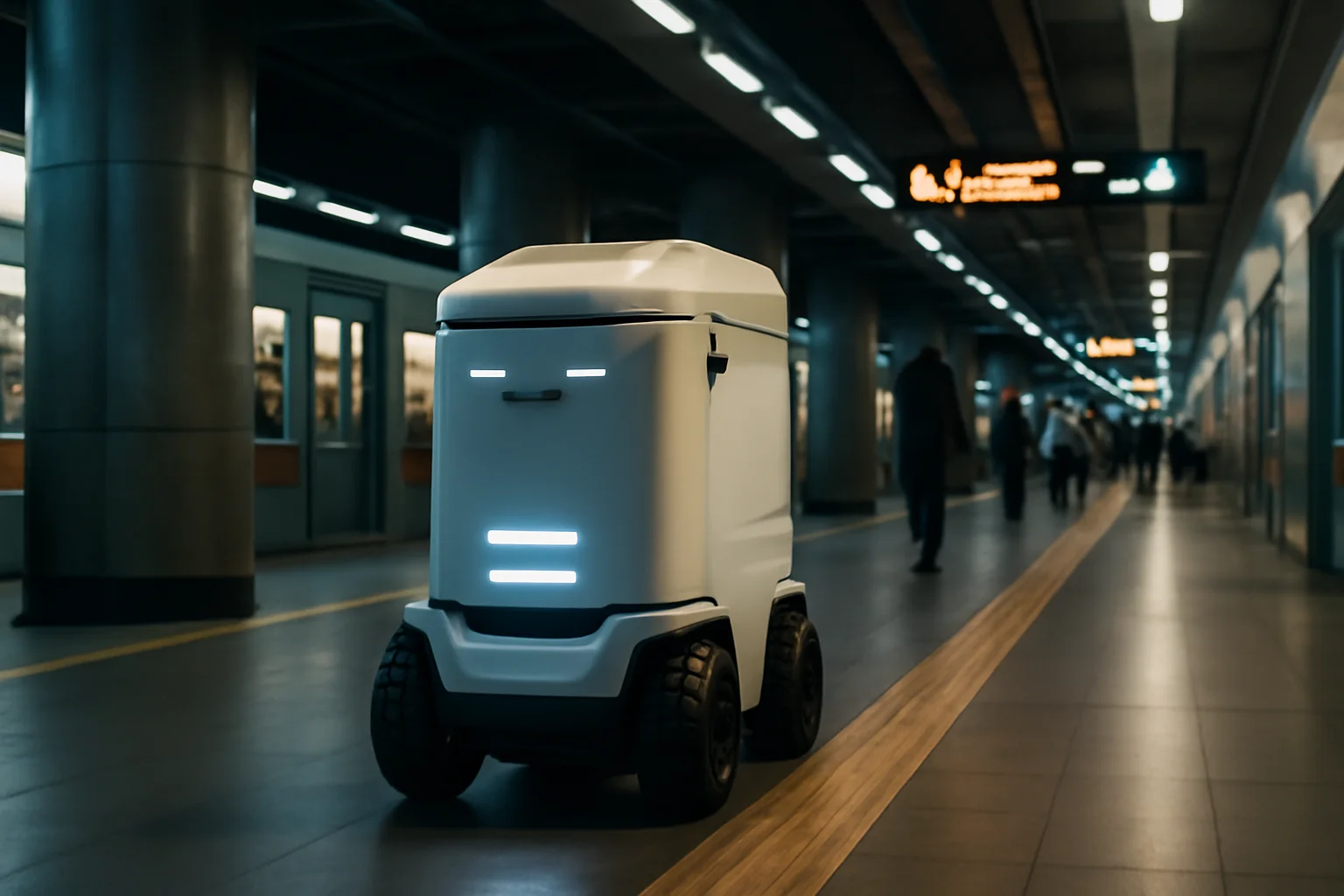
As the subway robots glide through the maze of Shenzhen’s underground, they’re not just making deliveries—they’re charting a course toward a radically reimagined urban future. City officials envision a time when automated logistics networks connect every corner of the metropolis, ensuring seamless movement of goods and supplies with minimal human intervention. The robots’ success in subway stations could open doors to other applications, from parcel delivery to mobile medical units and maintenance support, all operating within existing public infrastructure. As more robots share space with people, city planners and policymakers are rethinking the very design of transit hubs, public corridors, and commercial spaces. By embedding artificial intelligence into the heart of urban systems, cities like Shenzhen hope to create environments that are not just more efficient, but safer, more accessible, and ultimately more human-centric. This vision requires continuous collaboration between technologists, government, business leaders, and everyday citizens to ensure that innovation serves the public good. Already, hints of this future can be seen in China’s embrace of service robots for elder care, healthcare, traffic management, and beyond—a trend echoed in urban experiments worldwide. Challenges remain, from technical glitches to cultural resistance, but the momentum behind automation is building, propelled by real-world benefits and growing public acceptance. Shenzhen’s subway robots are only the beginning, a first step toward a new era of urban life where machines and people move in harmony, each shaping the city in ways both visible and unseen. Whether this experiment will be replicated, improved upon, or quietly shelved remains to be seen—but for now, the world is watching, and the robots are rolling.
Advertisement
10. Automation Moves Underground
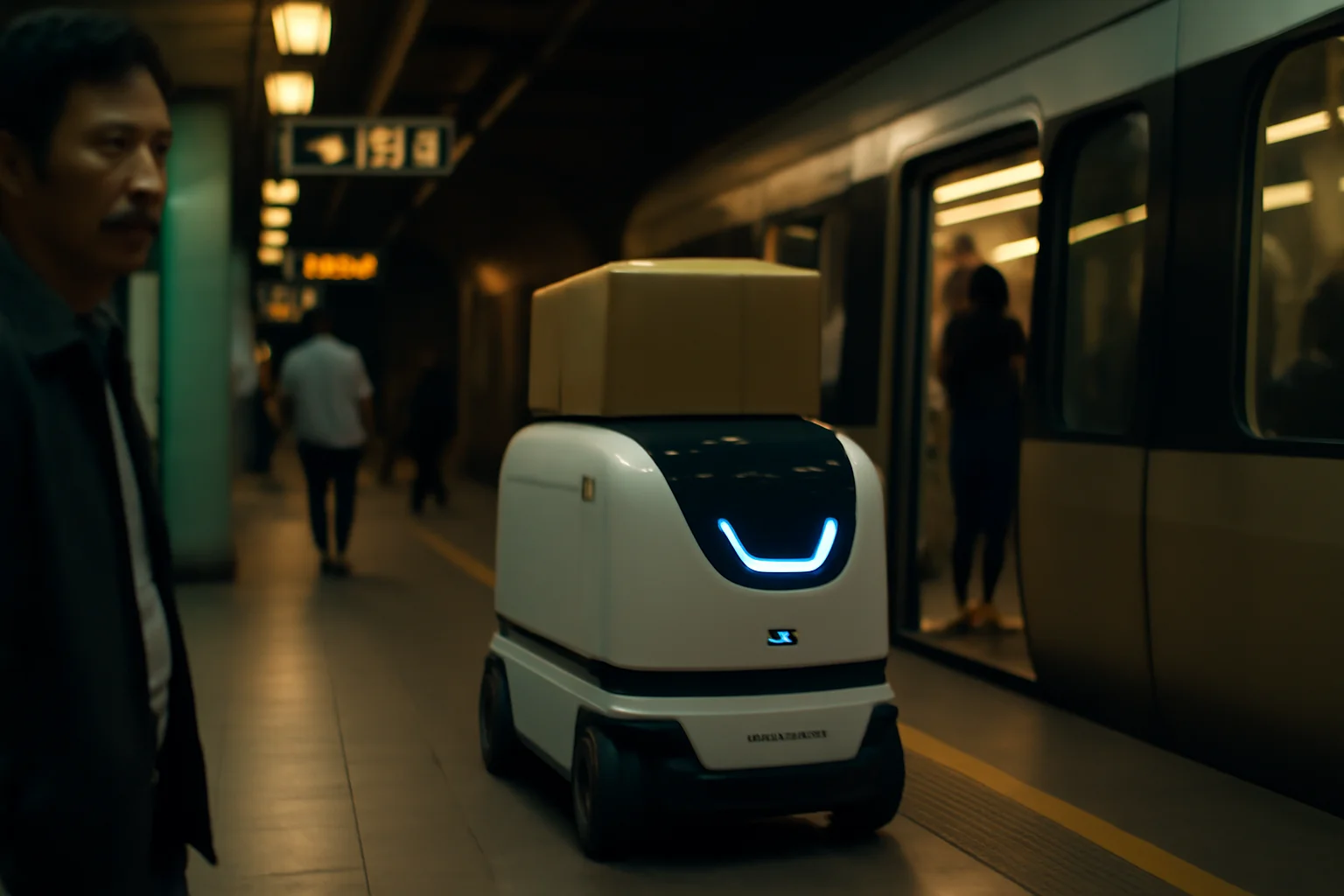
With every delivery completed, Shenzhen’s subway robots edge closer to blending seamlessly into the fabric of urban life—a quiet, persistent reminder that tomorrow is arriving today. The routines that once required teams of human workers now unfold as a series of orchestrated mechanical movements, guided by invisible lines of code and real-time data. Commuters, at first startled by the sight of animated machines, have begun to accept them as just another part of the city’s daily rhythm. As the bots ride the rails, descend elevators, and deliver their cargo, the barriers between human and machine continue to dissolve, replaced by patterns of coexistence and cooperation. Other cities will be watching Shenzhen’s progress, weighing its lessons and missteps as they chart their own course toward automation. For business owners, policymakers, and citizens alike, the pilot offers a window into a future where urban complexity is met not with brute force, but with adaptable, intelligent solutions. Yet, amid the march of progress, the core questions remain: how do we ensure that automation enriches rather than diminishes city life? How do we strike a balance between efficiency and employment, convenience and privacy, novelty and necessity? As Shenzhen’s experiment rolls forward, it may become clear that the greatest transformation isn’t in the hardware or algorithms—but in the subtle, evolving dance between a city and its newest residents. A new normal is dawning, deep beneath the city streets, where every robot delivery is both a service and a symbol of change. In the tunnels and platforms where people once labored alone, a shared journey has begun—one delivery, one commuter, one robot at a time.
Advertisement
Advertisement
You May Also Like






